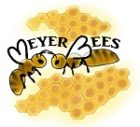Beekeeping is more than a hobby—it’s a commitment to nurturing one of nature’s most essential creatures. Whether you’re aiming to harvest your own honey, support local pollination, or simply enjoy the experience of maintaining a backyard hive, starting with the right beehive supplies and choosing a suitable beehive is key to your success.
Getting started in beekeeping can feel overwhelming at first, but with the right tools and knowledge, anyone can build a thriving apiary. Let’s explore what you’ll need and how to pick the right hive for your goals.
Why Quality Beehive Supplies Matter
Before you even welcome your first colony of bees, it’s important to understand what goes into a successful setup. Beehive supplies go far beyond just a box and some bees. They include everything from safety gear to hive components and tools for maintenance.
Having reliable supplies ensures your bees remain healthy and productive while keeping your own work more efficient and enjoyable. It also helps protect you from common mistakes and gives your bees the best chance at thriving through the seasons.
Must-Have Beehive Supplies for Beginners and Beyond
Here’s a closer look at some essential supplies to have on hand:
1. Protective Clothing
A full-body bee suit with a veil and gloves is essential. Even gentle bees can become defensive when disturbed. Protective gear keeps you safe and makes the beekeeping process much less stressful.
2. Smoker
The smoker is a classic beekeeping tool used to calm bees before opening the hive. The smoke disrupts their communication and helps minimize defensive behavior, allowing you to work safely and calmly.
3. Hive Tool
This multipurpose tool is a beekeeper’s best friend. It’s designed to pry open hive components and scrape off excess wax or propolis, both of which build up over time.
4. Bee Feeders
During times when natural nectar sources are low—like early spring or drought conditions—feeders help provide sugar syrup or pollen supplements to support your colony’s health and productivity.
5. Frames and Foundation
These components form the internal structure of the hive where bees build comb, raise brood, and store honey. Pre-assembled frames with foundation can make it easier for your bees to get started.
6. Queen Excluder (Optional)
Placed between the brood box and honey super, a queen excluder prevents the queen from laying eggs in honey storage areas. This keeps your harvested honey cleaner and easier to manage.
How to Choose the Right Beehive for Sale
Now that you have your supplies list ready, the next big step is selecting a beehive for sale that fits your needs. Hives come in different styles, sizes, and materials. Choosing the right one depends on your climate, how hands-on you want to be, and how much honey you hope to harvest.
Popular Hive Types:
- Langstroth Hive – Known for its stackable box design and removable frames. It’s beginner-friendly, scalable, and widely used.
- Top-Bar Hive – A more natural, horizontal layout. It requires less heavy lifting but can be trickier for honey harvesting.
- Warre Hive – A vertical, eco-focused hive that mimics wild bee nests, good for those seeking a low-intervention approach.
When shopping for a hive, consider:
- Material Quality: Untreated wood is common and helps with temperature regulation.
- Assembly Type: Pre-assembled hives save time, but kits can be more budget-friendly.
- Ventilation and Space: A good hive allows airflow and gives the colony room to grow.
Buying Beehive Supplies Locally
While online shopping is convenient, buying your beehive supplies, including a beehive, from a local supplier has real advantages. You can get hands-on advice, see the equipment up close, and even ask for recommendations tailored to your region’s climate and bee species. Some stores even offer starter kits or in-person workshops that can be especially helpful if you’re just getting started.
Final Thoughts
Starting your beekeeping journey the right way means being prepared—with the proper beehive supplies and a well-chosen beehive for sale. From safety gear and tools to the hive itself, each component plays a vital role in the health and productivity of your colony.
Whether you’re keeping bees to support pollination, produce honey, or simply connect with nature, investing in the right equipment from the start helps set you and your bees up for success. Take your time, ask questions, and enjoy the process—because beekeeping isn’t just about honey, it’s about becoming part of something much bigger.
